Mutations 0: Art, Consciousness, and the Anthropocene
Edited by Jeremy Johnson
90 pages / b&w / October 2024 / 9781947544291
Mutations Zero… A magical grimoire from the future; an Anthropocene Hypertext. This first issue features contributions by Brandt Stickley, Sam Mickey, AnaLouise Keating, Matthew Segall, Barabra Karlsen, Sean Kelly, and editor-in-chief Jeremy Johnson.
A magical grimoire from the future; an Anthropocene Hypertext
Mutations: Art, Consciousness, and the Anthropocene revives the need for imagining better worlds and using our imaginations as both a radical divinatory and political act. By putting words to the page through literary, political, and artistic creation, we generate instances, mutations, of these new worlds—realizations of the future latent in the present. This is an image of a counter-culture deeply engaged in the world, not defining itself by being against the present, but for the future. This anthology, then, builds a rhizomatic manifesto of consciousness culture—and how else could it be, but through a rhizome, a networked array?
Mutations invites a resurrection of the utopianism of the late 60s and the experimental institutions of the 70s, in our invocation to imagine a reality beyond capitalism—an occultism, a mysticism, for the Anthropocene. These emerging visions of the future promote transformations of worldview, remix past, present, and future mythologies, unleash new possibilities of aesthetics and philosophy. Contributors to this book find their home in liminality, engage in acts of “meta-cognition,” and are kin to the utopian project of spiritual and material emancipation. This book is a call for an approach to fashioning the future that is as mythopoetic as it is ecological, as mystical as it is political.
We are seeking a radical, integral multiplicity of voices in an emerging consciousness culture—voices that dwell in age of climate crisis and political upheaval. The response to this ecological age is to take leaps ourselves. Mutations is an activity, a performance, and an instance itself of the kind of thinking and being-in-the-world we might describe as “planetary.” As believers of the power of the radical, written word to transform, alter, and most importantly to commune, we recognize that writing together is an act of culture creation, and an invitation for both readers and writers alike to participate in the planetary thought of tomorrow.
Jeremy Johnson, Mutations, Imagination and Futurability: An Introduction
Brandt Stickley, Approaching the Origin: The Diaphanous Body and Classical Chinese Medicine
Sam Mickey, Climate Crisis, Karma, Compassion
AnaLouise Keating, Ontological Imagination: An Anzaldúan Manifesto for Social Change
Matthew Segall, Manifesto of a Gaian Cosmology
Barbara Karlsen, Becoming Metamorphic: Moving Towards a New Conception of Life
Sean Kelley, Ten Years After Coming Home
Mutations: Zero enters time orthogonally. Lately, time has felt more like a broken rhythm. Clock-time was already wavering, a thin trance waiting to be liberated from the speed of capital. In its place, time has become a strange pluralism. It rushes forward and stands still. Time is the heaviness we feel about uncertain climate futures, and the weightless flurry of all our transient nows. Time shows up as the rote pulse of calendar app notifications, now robbed of any sense of urgency during the blurry weeks of COVID lockdown, but we all feel that a different order of time has come alive in its place—a torrent dramatic and full, roaring with the import of historical, political and planetary events. Mutations of language concerning this emergent consciousness of time have proliferated. With new temporal sensibilities come new senses of world, self, and being, and so there are the great lists of proclaimed epochs attempting to name the when and the where of our arrival: Anthropocene, Chthulucene, Capitolocene, really “a (hi)story with a thousand names,” and “The Infinity of the Anthropocene.”1
The present array of epoch-naming speaks to a certain recognition, a new structure of feeling showing up in public conversations like the gloomy ambience of an Anthropocene track. We no longer ask, “how is the weather?” without that track pervading the space between words. Time makes an appearance in those interstices, too: a subtle recognition, a certain anxiousness, perhaps even a sense of guilt that although we are already living in new a time, demanding a new worldview, we do not know how to address this remarkable new realism.
Stated poetically, because it often through poetry and imagination where we first find language adequate enough to begin voicing this planetary intensification: we have begun to trace, in the very bones of our being, the contours of a new worldview.
The theme of time stitches together every fiber of Anthropocene living. Whenever we circumambulate the loaded subject of climate in conversation, we intuitively grok French philosopher Paul Valéry’s now well-worn aphorism, “the future… is no longer quite what what it used to be.”2 That line has become something like a melancholic track, stuck on repeat. When we name this slippery feeling, call it a “climate melancholia,” the naming reveals something about the entangled relations between time, capital and climate (i.e., Capitolocene), but it also discloses characteristics of the new time that has already begun to shape our social imaginaries.
Franco Bifo Berardi, in his 2011 book After The Future, called it the “slow cancellation of the future,” bringing attention to the underlying metaphysical and mythological assumptions our culture makes about the nature and direction of time itself.3 The moderns, or those who were “pervaded by a religious belief in the future” (a future often involving the unending development of capital), have ultimately lost faith in their utopias of tomorrow.4 Whereas the early twentieth century could be characterized by Italian Futurists like Filippo Tommaso Marinetti and his poetic glorification of the newly invented race car—“god of a race of steel … drrrunken on space”(!)—we, the inhabitants of the present, no longer imbue the future with an electro-utopian aura.5 The digital age arrived, but it did not bring about the emancipation of labor. The cultural sensibility of the moderns, those who imagined that time was like a race car, powering the brilliantine engine of capital, has receded in favor of a wilder realism.
It is this wilder realism which enters time orthogonally. The structure of feeling pervading our culture already acknowledges the arrival of this new time.
“The music we grew up with,” a distorted radio voice states on a recent Oneohtrix Point Never track, “doesn’t speak for us in the new era we’re now going through… now, simply, we all grew up to be something new.”6 If the very particular, and very modern consciousness of time and the future has receded from the horizon of our being, it is because we already find ourselves in a mutational process of realizing new forms of being, both within and without.
Planetary conditions have readily testified to this radical transparency. “At any given moment,” Andreas Malm wrote in The Progress of This Storm: Nature and Society in a Warming World, “the excess of heat in the earth system is the sum of all those historical fires… the storm of climate change draws its force from countless acts of combustion… We can never be in the heat of the moment, only the heat of this ongoing past… indeed, the air is heavy with time.”7
Each planetary event—whether climatological or viral—arrives like an emissary from the future, offering lessons like crystalline fragments belonging to the whole of time.
Climate uniquely intensifies and catalyzes this new consciousness in ways that neither Marinetti’s race car nor stuck-in-forward-gear capitalist time ever could. When we approach the subject of climate through the singularity of events like heat domes or hurricanes, we encounter a radically transparent temporality where present is
always-already “dissolving into past and future alike.”8Another fragment from the future arrives with this insight. The past erupts in the fiery heat of the present (quite literally in cases like the recent wildfires of the Pacific Northwest and Australia). The
future holds a spooky intimacy with us too, enmeshed as unborn generations latently are in the activities of our present. Anthropocene time marks the annunciation of weird (as in twisted) time, uncanny time: it stretches, folds and enfolds in marvelous entanglements as if it were all happening at once—and it is.Like entering the “Zone” in Andrei Tarkovsky’s 1979 film Stalker,
weird time can never be approached directly. The shape of time takes on manifold forms—spirals, weaves and rhizomes, naming just a few—in order to accommodate these complex, processual, ever-
intensifying ecological and climatological relationships.Weird time cannot be evaded. Transparency is found already in and through every step, every turn we make.
Reversals
Eco-philosopher Timothy Morton made this point when he collaborated with artist Justin Brice Guariglia to display “eco-haikus” in public spaces: “WE ARE THE ASTEROID.”9 It is a provocative way of communicating Anthropocene weirdness, the uncomfortable realization that humans are responsible for the sixth great extinction. Another eco-haiku goes, “WARNING: HUMAN HURRICANE,” and then the next goes for the explicitly temporal: “FOR SYMBIOSIS: REDUCE SPEED NOW.”10
When we linger we create time and relationships bloom.
Unrelenting haste severs relationship, and like German philosopher Byung-Chul Han talks about, a culture driven so one-sidedly by haste creates the conditions for its own atomization—in the univocal embrace of haste, we lose space and time. We are no longer familiar enough with the pace of living relationship. The “scent of time,” like Proust’s madeleine, can only be known by slowing down, growing into the fullness of time through our senses.“Utopia has been yang,” Ursula K. Le Guin wrote, comparing the culture of the moderns to the masculinity of the yang concept in Chinese philosophy, “the big yang motorcycle trip… firm, active, aggressive, lineal, progressive, creative, expanding… our civilization is now so intensely yang that any imagination of bettering its injustices or eluding its self-destructiveness must involve a reversal.” Slow down and reversal does not necessarily mean linear retrogrades, a mere gear shift, retreating back down the road we came. They form a movement into new orders of being where our previous conceptions no longer make sense. Marshall McLuhan understood this too. “The greatest of all reversals,” he wrote in Understanding Media, took place with the new electronic culture, which “ended sequence by making things instant.”11 Orthogonal time breaks in. “That great pattern of being,” McLuhan contemplated, “that
reveals new and opposite forms just as the earlier forms reach their peak performance… from lineal connections to configurations.”12 As the total colonization of time and the human being into algorithm is occurring, and even as “remarkable” innovations of financial capital continue unabated, a new order of being has already set in.13This reversal, which is to say this emergent worldview, appears to involve:
a) The breaking free of time from “clock-time,” and the constraints
capital in the old worldviewb) The resurgence and intensification of time through climatological and ecological realities, which in turn catalyze in us a new consciousness of time
c) The catastrophic collapse of our modernist worldview, creating a sense of mutational urgency, and necessitating an orthogonal move into cultural practices aligned with biospheric constraints: i.e., bio-
regionalism, peer-to-peer economics, and regenerative principles which decenter the human within a more cooperative “Gaianthropic” view14d) This orthogonal move involves the mutational leap from abstract, extractive globalization to concretizing and regenerative “planetization”
While the latter two points exhibit our new reality, and their existential gravity cannot be overstated, their realization in and through cultural evolution is remains prefigurative. Emissaries from the future continue to arrive in the form of catastrophe. They intensify and catalyze new mutations of thought and imagination.
Our culture operates anachronistically in that even as we are shaped by the new structure of feeling, tomorrow’s being, we continue to act from a knowing that belongs to yesterday. McLuhan, again, put it ever so succinctly: “We look at the present through a rear-view mirror. We march backwards into the future.”15
Historian of consciousness William Irwin Thompson recognized the initiatory potential that such disruptions can have on cultural transformation. “Catastrophes,” he wrote, “are discontinuous
transitions in Culture-Nature through which knowing has an opening to Being,” and so with any of these future fragments and orthogonal arrivals we might obtain momentary glimpses of tomorrow. These glimpses crystallize new pathways between our being and knowing, “a rapid flip-over or reversal in which the unthinkable becomes possible.”16When our knowing and being are rendered transparent to one another, the future is present, even fulfilled to some immeasurable degree through our participation.
When we move from the broad shape of cultural evolution and consider the life of an individual, orthogonal time shows up in the intensification of the spiritual present. The present aids us in forgoing the compulsive atomization of speed and the segmenting linearity of machine time, both of which only serve to divide ourselves and the world.
It is through the spiritual present that we can act from a more intelligible and “senseful” awareness that cultivates a friendlier consciousness of time and blossoms forth in us: not a fragment, no, but the sudden “flashing-forth” through the whole of time.17 This form of intensified presence alone appears sufficiently luminous enough to render the integrality of our world—with its living relationships in the radiant body of time—at last cohered, visible and transparent.
Mutant Imaginations and Futurability
Another fragment from the ever-present future arrives through considering the symbiotic relationships that constitute our being. Complex intelligence, we are learning, shows up everywhere, from cephalopods to slime molds, or the mycelial networks of fungi. We are a strange pluralism, too, with bacteria making up more than half of our body’s cells.18 Science fiction imaginaries are helping us to wrestle with this transparency, and as Arkady Martine so effectively queried in her recent fiction — “how wide is the concept of you?”19 Each of us, then, is “already a symbiotic being entangled with other symbiotic beings.”20
For the old worldview this entanglement feels like an almost unbearable transparency, but like the warming of climate and the intensification of time, it foments in us a potent mutational urgency.21 Kim Stanley Robinson has recently emphasized the catalytic and mutational import these realizations have on our culture: “to survive you depend on any number of interspecies operations going on within you all at once. We are societies made of societies; there are nothing but societies. This is shocking news—it demands a whole new world view.”22
Fortunately, we find ourselves already standing (or crawling, slithering, fluttering) in a new time, the “thick present” anthropologist Donna Haraway named, “a temporality of the thick, fibrous, and lumpy ‘now’ which is ancient and not… a tentacular web of troubling relations that matter now.”23 Descriptions like these are not definitive or totalizing. They are inquisitive and open. Mutagenic and creative matrixes that help us relate with a living world that is always relating with us.
Berardi suggests the concept of “futurability,” which provides a helpful framing for Mutations as a creative and time-emancipating project. “Futurability refers to the multidimensionality of the future: in the present a plurality of futures is inscribed,” he writes, emphasizing that futurability is really the embrace of that wider and wilder time, the time of “becoming other” through creative actualization of futures “already inscribed in the present.”24 Berardi echoes the words of Swiss poet and phenomenologist of consciousness Jean Gebser (1905-1973). “Our concern,” Gebser remarked in 1949, “is to render transparent everything latent “behind” and “before” the world—to render transparent our own origin, our entire human past, as well as the present, which already contains the future. We are shaped and determined not only by today and yesterday, but by tomorrow as well.”25
The word “mutation” is borrowed from Gebser, who wrote about the transformational leaps of time, art, and language across the history of consciousness. Of special import for Gebser was the “integral” mutation, the emergence of a transparent and “aperspectival
world,” which he considered already well underway in the twentieth century.This new mutation, succinctly, involved a fundamental leap:
1. From space and abstract thinking to time, processual thinking (thinking with time), and “senseful” awaring
2. overcoming the many reified dualisms (human/non-human, self/other, past/future, life/death) through
3. a realization of the new ontological ground, transparency: a consciousness of the whole which in turn makes the previous two characteristics possible. Transparency has created the necessary preconditions for an integrative process to take place. Or stated explicitly: the regeneration of the whole history of consciousness (all previous mutations), which must be rendered whole and co-effectual through the ineradicable present if we are to realize the future (the integral mutation).
What utterance in language could sufficiently speak to this new consciousness of time, this weirding of time in to entangled threads of living relations—past, present, and future? How do mutations of consciousness and culture help us to make that orthogonal move into habitable futures?
It is this inquiry into new ontological possibilities, ecological, processual, or imaginal in nature, that many of the contributors to Mutations journal are writing about. Our journal is humbly seeking to continue the fundamental inquiry of Gebser’s kulturphilosophie: answering the call of a mutational urgency, attempting to creatively participate with futures that have already arrived and continue to shape the present.
Mutations seeks to give voice, shape, and form to these fragments of latent-but-present futures, body them forth through new language, art, scholarship and even “planetary” imaginaries.26 If we are to have any futurability, if we wish to reclaim the future and therefore emancipate time from its capture by colonization, capital and labor, it must be through an orthogonal move into new and intensified forms of consciousness and imagination—it really is mutants or bust.
The integral mutation, then, concerns an orthogonal move into new ontologies of space and time, commingling with a revivified spiritual imagination, cohering new and habitable planetary futures. The title for Issue Zero, “Art, Consciousness and the Anthropocene,” is a variation of this transformational triptych:
I. imagination (art): the creative process of shaping new futures, remediating ancestral histories, realizing them through aesthetics, storytelling, and other cultural expressions.
II. mutations (consciousness): the history of consciousness and cultural evolution actively shapes us in the present. When we clarify their histories—even trace the origins of our “modern” worldview to its respective consciousness structure—we can ameliorate the sense of vertigo during this interregnum period, teasing the threads of the old worldview from the new.
III. and futurability (Anthropocene): when we participate in new possibilities of time and space, self and world, we necessarily engage with creative imagination and give these new possibilities their language, art, and concepts, i.e., their historical forms. Fragments of the future bloom in the present. The two previous themes fold into a third. “Futurability,” the creative participation with and realization of habitable futures through the radiant transparency of the intensified present.
Mutations, imagination, futurability. Cultural evolution initiates us into this moment of dramatic bifurcation between one world closing down and planetary futures calling us home. We can feel it in ourselves, brimming over as we are with mutational urgency: a leap is needed, a consciousness of the whole, integral human being that can meet civilizational crisis with emergent forms of planetary “transindividuation.”27 Not the exhausted and partial expression of the human-as-modern, which has already concluded itself, but the transparent human who can engage with the “unthinkable” present of the Anthropocene because they recognize it as a mirror and creative invitation into their own knowing and being.28
It is through that unthinkable present, like an emptiness that is in reality very alive, and very full, that we are learning to “become a silence that calls the future.”29
Notes
1 Bruno Latour and Peter Weibel, Critical Zones: The Science and Politics of Landing on Earth (MIT Press, 2020), 47.
2 See Charles Ray Doyle, Wolfgang Mieder, and Fred R. Shapiro, The Dictionary of Modern Proverbs (Yale UP, 2012).
3 Franco Bifo Berardi, After the Future (AK Press, 2011), 18.
4 Ibid 25.
5 Ibid 22.
6 See Oneohtrix Point Never album lyrics:https://genius.com/Oneohtrix-point-never-cross-talk-ii-lyrics [last accessed Sept. 23, 2021}
7 Andreas Malm, The Progress of This Storm: Nature and Society in a Warming World (Verso, 2018), 5.
8 Ibid.
9 Justin Brice Guariglia, “WE ARE THE ASTEROID III” https://ybca.org/event/we-are-the-asteroid-iii/(Last Accessed September 23, 2021)
10 Ibid.
11 Marshall McLuhan, Understanding Media: The Extensions of Man (Signet Books, 1964), 27.
12 Ibid.
13 See Yanis Varoufakis, “Something remarkable has just happened this August.” https://www.yanisvaroufakis.eu/2020/08/21/something-remarkable-just-happened-this-august-how-the-pandemic-has-sped-up-the-passage-to-postcapitalism-lannan-institute-virtual-talk/ [Last Accessed Sept 23, 2021]
14 Sean Kelly, Becoming Gaia: On the Threshold of Planetary Initiation (Integral Imprint, 2021), 29.
15 Marshall McLuhan, The Medium is the Massage: An Inventory of Effects (Bantam, 1967).
16 William Irwin Thompson, TITLE (Lindisfarne Press, 1987), 212.
17 From Asien lächelt anders by Jean Gebser, translated excerpt by Aaron Cheak. See “Rendering Darkness and Light Present.” http://www.aaroncheak.com/darkness-and-light [Last accessed September 23, 2021]
18 James Gallagher, “More than half your body is not human.” https://www.bbc.com/news/health-43674270 [Last accessed September 23, 2021]
19 Arkady Martine, A Memory Called Empire (Tor, 2019), 235.
20 Timothy Morton, All Art is Ecological (Penguin Books, 2021), 104.
21 “Mutational urgency,” is not doing something now or hurrying up to address a crisis. It is closer to the urgency of the artist who may feel their creativity has possessed them—a creative urgency, a poeisis, of what is latent and wishes to be realized and the artist or maker who is fulfilled in the making.
22 Kim Stanley Robinson, https://www.newyorker.com/culture/annals-of-inquiry/the-coronavirus-and-our-future [Last accessed September 23, 2021]
23 Donna Haraway, “2016 Anthropocene Consortium Series: Donna Haraway” https://www.youtube.com/watch?v=fWQ2JYFwJWU [Last accessed Sept. 23, 2021]
24 Franco Bifo Berardi, Futurability: The Age of Impotence and the Horizon of Possibility (Verso, 2017) 13, 20.
25 Jean Gebser, The Ever-Present Origin (Ohio UP, 1985), 7.
26 Bruce Clarke, Gaian Systems: Lynn Margulis, Cybernetics, and the End of the Anthropocene (University of Minnesota Press, 2019), 208.
27 See Debashish Banerji, 2015 “Individuation, Cosmogenesis and Technology: Sri Aurobindo and Gilbert Simondon.” Integral Review 11. 1 (February): 65–79.
28 William Gibson, “Technology, Science Fiction & the Apocalypse,” 25th Anniversary Chicago Humanities Festival (lecture, November 6, 2014) https://www.youtube.com/watch?v=4dlvle5YBv4 (Date of Access: Sept. 23 2021)
29 Debashish Banerji, “Become a Silence that Calls in the Future,” Cohering the Radical Present (class lecture, Nura Learning, November 11, 2020).
About the Editor
Jeremy Johnson, MA is the founder/director of Nura Learning and has worked in the online learning field for five years with companies such as Evolver and the Open Center in New York City. He is also a contributing editor at Reality Sandwich magazine. He has published on OMNI, Conscious Lifestyle Magazine, Kosmos Journal, Evolve Magazine, and Evolve and Ascend. Jeremy is the current president of the International Jean Gebser Society.
Additional information
| Dimensions | 7 × 5 × .5 in |
|---|

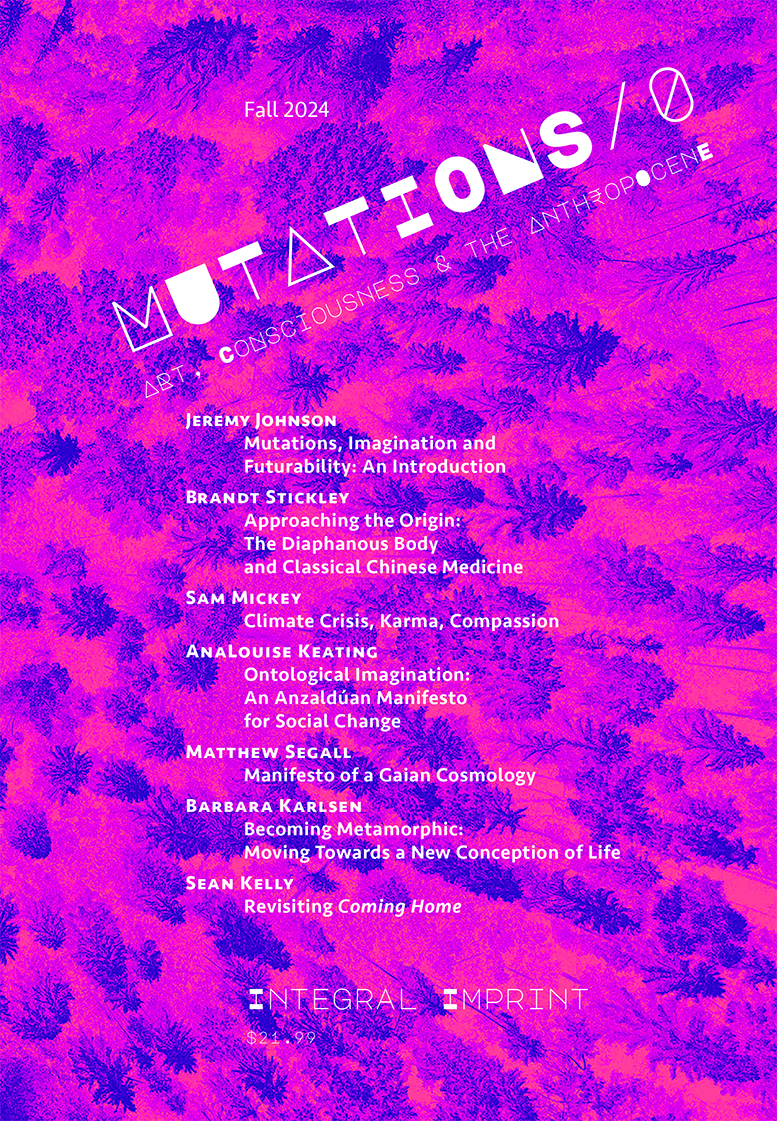
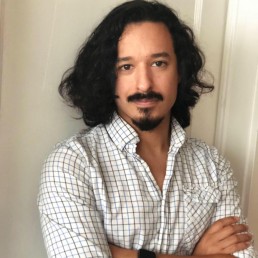
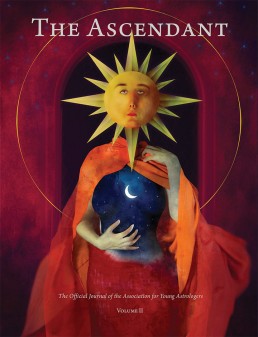
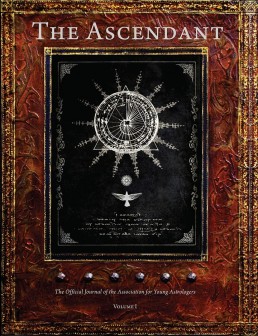
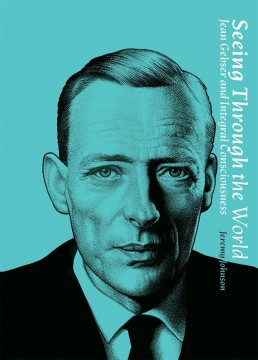
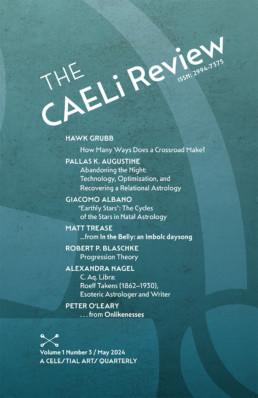
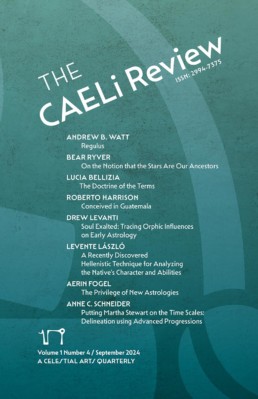
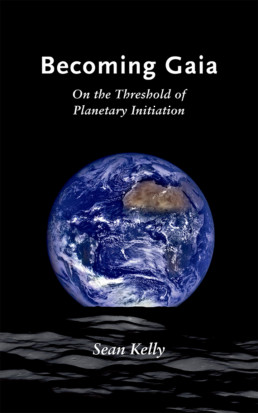
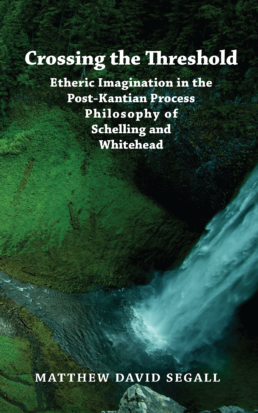
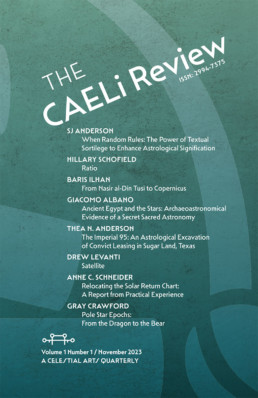
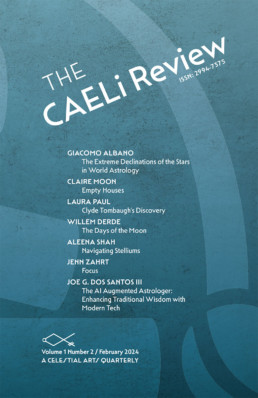
Reviews
There are no reviews yet.